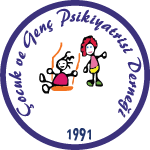Dear Editor,
The development of artificial intelligence (AI) technologies, particularly large language models (LLMs) like ChatGPT, has changed how we interact with information. AI encompasses a broad range of technologies designed to mimic human intelligence, and LLMs are specifically engineered to process and generate human-like text. ChatGPT, one of the most well-known LLMs, is increasingly used for various purposes, from assisting with homework to creating content. While they offer clear advantages, there are growing concerns about how they affect the mental health and learning abilities of adolescents.1
One of the most significant advantages of LLMs is the speed at which they provide information. For students, this means they can quickly get answers to their questions, making learning more accessible. This can be especially useful when they are dealing with tough subjects. Instead of spending hours searching for answers, students can use LLMs to clarify confusing topics and get back on track. Additionally, these models can inspire creativity by suggesting ideas or helping to overcome the dreaded writer’s block, which can be a massive relief for young people struggling with where to start on a project.
However, there are some real downsides to this technology, especially when it comes to developing critical skills. One of the major concerns is that students might become too dependent on these tools, leading to a decline in their ability to think critically. When answers are always just a few keystrokes away, there is less motivation to deeply engage with the material, analyze it, and truly understand it. This kind of passive learning can result in a shallow grasp of the subject, where students know the basics but lack more profound knowledge crucial for applying what they have learned in new situations.
Another issue is the potential impact on writing skills. Writing is more than just stringing words together-it is about organizing thoughts, building arguments, and expressing ideas clearly. These are skills that take time and practice to develop. However, when students rely on AI to generate text for them, they miss out on this crucial practice. Over time, this could lead to weaker writing abilities as students become less confident in their ability to craft their thoughts and ideas without the help of a machine.
Creativity is also at risk. True creativity involves thinking outside the box, creating original ideas, and taking risks. However, if students turn to AI for creative content, they might engage less in this process. Instead of coming up with their ideas, they might rely on what the AI suggests, which could lead to less originality in their work. This dependence on AI-generated content could stifle the creativity, making it harder for students to develop their unique voices.
Beyond these learning-related concerns, there is also the issue of mental health.2 The constant availability of information can be overwhelming, especially for adolescents already dealing with the pressures of school, social life, and the transition to adulthood. There is a risk that they might feel pressured to always be “online,” constantly seeking the latest information or trying to keep up with their peers. This can lead to stress, anxiety, and even burnout as students struggle to find a balance between using technology and taking time for themselves.
Social isolation is another problem that can arise from over-reliance on LLMs. Even if these tools can be handy, they cannot replace human interaction. Adolescents who spend too much time interacting with AI might miss out on crucial social experiences for developing strong communication skills and building meaningful relationships.3 Without these experiences, they might struggle with reading social cues, expressing their emotions, or connecting with others, all essential for mental and emotional well-being.
There are also ethical concerns to consider. LLMs are trained on vast amounts of data, some of which might be biased or inaccurate. If students are not careful, they might accept biased information as a fact, which could reinforce harmful stereotypes or spread misinformation. This is especially concerning for adolescents, who are still developing their critical thinking skills and might not yet be able to discern fact from fiction.
Privacy and security are other important issues. The data used to train these models often includes personal information, raising questions about how that data is handled.4 There is a risk that this information could be misused, leading to privacy breaches or other security problems. Adolescents, who might not fully understand the implications of data privacy, could be particularly vulnerable to these risks.
Despite these concerns, it is essential to recognize that LLMs can be a valuable tool for learning and creativity if used responsibly. The key is to strike a balance between using these tools as a supplement to traditional learning methods rather than as a replacement. Parents, teachers, and other adults play a crucial role in guiding adolescents on how to use these technologies to support their development rather than hinder it.
It is essential to encourage students to actively engage with the material they are learning rather than passively accepting AI-generated content. This means promoting critical thinking, creativity, and strong writing skills, that are best developed through practice and real-world experiences, not just through interactions with AI. By fostering these abilities, we can help students make the most of the benefits LLMs offer while safeguarding their mental health and long-term development.
In our increasingly digital world, being mindful of how technology influences the younger generation is crucial. By taking a thoughtful approach to integrating LLMs into education and daily life, we can ensure that these tools enhance learning and creativity without compromising the adolescent well being. The goal is to use technology to support and enrich human potential rather than diminish it.



